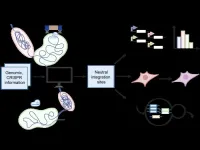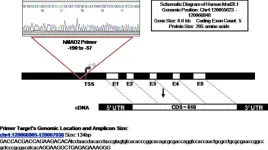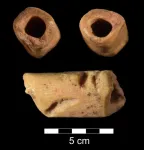(Press-News.org) Emergency medical service (EMS) systems are not consistently providing optimal care based on new national standards of quality to patients who call 911, according to a new study from the Icahn School of Medicine of Mount Sinai.
The study demonstrates that EMS performance on key clinical and patient safety measures varies widely across urban and rural communities. The findings, published in the peer-reviewed Prehospital Emergency Care, identify opportunities that could lead to improved care during 911 responses and improved outcomes for patients across the United States.
“EMS systems in the United States have traditionally relied upon operational measures, like response times, to measure performance of the system. However, this study highlights how patient care and experience are not solely determined by how fast an ambulance can arrive at the patient’s side,” explains lead author Michael Redlener, MD, Associate Professor of Emergency Medicine at Icahn Mount Sinai. “While fast response times are essential for rare, critical incidents—like when a patient’s heart stops beating or someone chokes—the vast majority of patients benefit from condition-specific clinical care in the early stages of a medical emergency. It is essential for EMS systems, government officials, and the public to know about the quality and safety of care that is occurring and find ways to improve it.”
This is the first study to use specific safety and clinical quality measures to assess patient care across the entire 911 system in the United States. The research team reviewed all 911 responses in the United States for the year 2019, more than 26 million responses from 9,679 EMS agencies. They assessed specific quality measures in each call outlined by the National EMS Quality Alliance – a nonprofit organization that was formed to develop and endorse evidence-based quality measures for EMS and healthcare partners that improve the experience and outcomes of patients and care providers. This includes the treatment of low blood sugar, seizures, stroke, pain, and trauma, as well as medication safety and transport safety. Some of the notable findings were:
Pain for trauma patients improved in only 16 percent of cases after treatment by EMS.
39 percent of children with wheezing or asthma attacks did not receive breathing treatments during their EMS call, even though earlier treatment can lead to earlier relief of distressing symptoms.
Nearly one-third of patients with suspected stroke did not have a stroke assessment documented, potentially delaying or missing time-sensitive treatment.
The researchers also analyzed performance of all EMS agencies, looking at agency size and location—urban, suburban, and rural. They discovered substantial differences in agencies that primarily responded in rural communities compared to urban and suburban areas. Agencies with responses in mostly rural areas were less likely to treat low blood sugar or improve pain for trauma patients, and more likely to use lights and sirens unnecessarily when compared to EMS systems in urban and suburban communities. Previous studies have shown that when lights and sirens are used during EMS transport there is a higher likelihood of accidents, injury, and death, so unnecessary use may be more dangerous. Dr. Redlener says the difference between the highest- and lowest-performing agencies on these key measures is notable.
“This work is not about blaming bad EMS services, but about uncovering opportunities to improve patient care,” Dr. Redlener adds. “We have to move away from solely looking at response times and start looking at performance that directly impacts the people we are meant to treat.”
END
Quality of care for patients who call 911 varies greatly across the United States, study finds
New research could lead to more consistency and safety measures
2024-02-13
ELSE PRESS RELEASES FROM THIS DATE:
CRISPR-copies: New tool accelerates and optimizes genome editing
2024-02-13
CRISPR/Cas systems have undergone tremendous advancement in the past decade. These precise genome editing tools have applications ranging from transgenic crop development to gene therapy and beyond. And with their recent development of CRISPR-COPIES, researchers at the Center for Advanced Bioenergy and Bioproducts Innovation (CABBI) are further improving CRISPR’s versatility and ease of use.
“CRISPR-COPIES is a tool that can quickly identify appropriate chromosomal integration sites for genetic engineering in any organism,” said Huimin Zhao, CABBI Conversion Theme Leader ...
Teenagers need better reproductive health education to tackle parenthood fears
2024-02-13
Nearly half of teenagers are worried about having children and many lack knowledge about their reproductive health, find two new studies by UCL researchers.
The studies, published in Human Fertility and Health Education Journal, used survey results from 931 students in England aged 16 to 18, collected between May 2021 and July 2022.
The Human Fertility paper found that a majority of students (64%) still wanted to have children in the future – with nearly half (49%) desiring to have two children.
However, 45% of all participants said that they had concerns about future ...
Data-driven app results in 25% fewer emergency hospital admissions from care homes
2024-02-13
The use of a digital remote monitoring technology in care homes has been found to reduce hospital A&E attendances by 11% and emergency admissions by 25% in a new study from the Health Data Research UK (HDR UK) Better Care programme, published today in Age and Ageing - the official journal of the British Geriatrics Society.
There are over 400,000 people living in care homes across the UK, many of whom will be living with complex medical needs that put them at greater risk of needing emergency healthcare, especially during the winter months.
Through the HDR UK Better Care programme, a collaboration between the universities ...
In rural states, gardening and foraging helped prevent hunger during COVID: Study
2024-02-13
New research on rural New Englanders shows that gardening, hunting, fishing and other HWFP activities are important tools for maintaining food security through extreme events, such as pandemics or climate change events.
University of Vermont and University of Maine researchers found that both food insecurity and home and wild food production (HWFP) – gardening, hunting, fishing, foraging, and having “backyard” poultry or livestock – increased significantly during the COVID-19 pandemic, and those who undertook HWFP activities exhibited improved food security 9-12 months later.
The paper, published in Scientific Reports, surveyed ...
New study finds roughly 1 in 10 pregnant people will develop long COVID
2024-02-13
UNDER EMBARGO UNTIL: Feb. 12, 2024 5:45 p.m. Eastern Standard Time
Media Contacts: Karen Addis, APR, karen@addispr.com, +1 (301) 787-2394; Kerri Wade, MPA, kwade@smfm.org, +1 ...
Differential expression of Mad2 gene in human esophageal cancer
2024-02-12
“[...] people of the northeastern region [of India] consume betel quid, consisting of raw areca nut [...]. People often swallow the entire betel-quid after chewing, which is believed to contribute to the development of oral, esophageal, and gastric cancers.”
BUFFALO, NY- February 12, 2024 – A new research paper was published in Oncotarget's Volume 15 on February 5, 2024, entitled, “Differential expression of Mad2 gene is consequential to the patterns of histone H3 post-translational modifications in its promoter region in human esophageal ...
RIT's Center for Detectors to work on two NASA projects
2024-02-12
Rochester Institute of Technology’s Center for Detectors has been chosen by NASA for two research programs: Early Stage Innovations (ESI) and Strategic Astrophysics Technology (SAT), with the hope of helping future spacecraft find new discoveries in the vast universe.
Under the leadership of Center for Detectors Director Don Figer, the team will be advancing and characterizing single-photon sensing complementary metal-oxide semiconductor (CMOS) image sensors to determine if they can survive the harsh radiation environments in NASA missions. The intent is to fly these types of detectors on future missions to find life on Jupiter’s ...
Archaeologists discover oldest known bead in the Americas
2024-02-12
University of Wyoming archaeology Professor Todd Surovell and his team of collaborators have discovered a tube-shaped bead made of bone that is about 12,940 years old.
The bead, found at the La Prele Mammoth site in Converse County, is the oldest known bead in the Americas.
Surovell’s research was published in the peer-reviewed journal Scientific Reports; the paper is titled “Use of hare bone for the manufacture of a Clovis bead.” Members of the research team included people from UW, the Office of the Wyoming State Archaeologist, the University of Manchester, Weber ...
Interferon-gamma drives brain pathology in a mouse model of multiple system atrophy
2024-02-12
BIRMINGHAM, Ala. – Multiple system atrophy is a rare and fatal neurodegenerative disease, where insoluble inclusions of the protein alpha-synuclein appear in oligodendrocyte cells of the brain. The resulting pathogenesis features neuroinflammation, demyelination and neurodegeneration. Oligodendrocytes produce myelin, an insulating sheath on the axons of nerves.
In 2020, Ashley Harms, Ph.D., and University of Alabama at Birmingham colleagues published an Acta Neuropathologica study that used a mouse model to show that the ...
Drought may drive deadly amphibian disease, researchers find
2024-02-12
UNIVERSITY PARK, Pa. — Pumpkin toadlets are in trouble. Progressively severe droughts are disrupting the microbiomes of the thumbnail-sized orange frogs, potentially leaving them vulnerable to a deadly fungal disease, according to a new study by an international research team. The finding suggests that abnormal rainfall patterns, which are expected to worsen due to climate change and deforestation, may upset mutually beneficial relationships between wildlife and microorganisms, leading to biodiversity decline.
The researchers, led by Penn State doctoral ...
LAST 30 PRESS RELEASES:
Fires could emit more air pollution than previously estimated
A new way to map how cells choose their fate
Numbers in our sights affect how we perceive space
SIMJ announces global collaborative book project in commemoration of its 75th anniversary
Air pollution exposure and birth weight
Obstructive sleep apnea risk and mental health conditions among older adults
How talking slows eye movements behind the wheel
The Ceramic Society of Japan’s Oxoate Ceramics Research Association launches new international book project
Heart-brain connection: international study reveals the role of the vagus nerve in keeping the heart young
Researchers identify Rb1 as a predictive biomarker for a new therapeutic strategy in some breast cancers
Survey reveals ethical gaps slowing AI adoption in pediatric surgery
Stimulant ADHD medications work differently than thought
AI overestimates how smart people are, according to HSE economists
HSE researchers create genome-wide map of quadruplexes
Scientists boost cell "powerhouses" to burn more calories
Automatic label checking: The missing step in making reliable medical AI
Low daily alcohol intake linked to 50% heightened mouth cancer risk in India
American Meteorological Society announces Rick Spinrad as 2026 President-Elect
Biomass-based carbon capture spotlighted in newly released global climate webinar recording
Illuminating invisible nano pollutants: advanced bioimaging tracks the full journey of emerging nanoscale contaminants in living systems
How does age affect recovery from spinal cord injury?
Novel AI tool offers prognosis for patients with head and neck cancer
Fathers’ microplastic exposure tied to their children’s metabolic problems
Research validates laboratory model for studying high-grade serous ovarian cancer
SIR 2026 delivers transformative breakthroughs in minimally invasive medicine to improve patient care
Stem Cell Reports most downloaded papers of 2025 highlight the breadth and impact of stem cell research
Oxford-led study estimates NHS spends around 3% of its primary and secondary care budget on the health impacts of heat and cold in England
A researcher’s long quest leads to a smart composite breakthrough
Urban wild bees act as “microbial sensors” of city health.
New study finds where you live affects recovery after a hip fracture
[Press-News.org] Quality of care for patients who call 911 varies greatly across the United States, study findsNew research could lead to more consistency and safety measures




